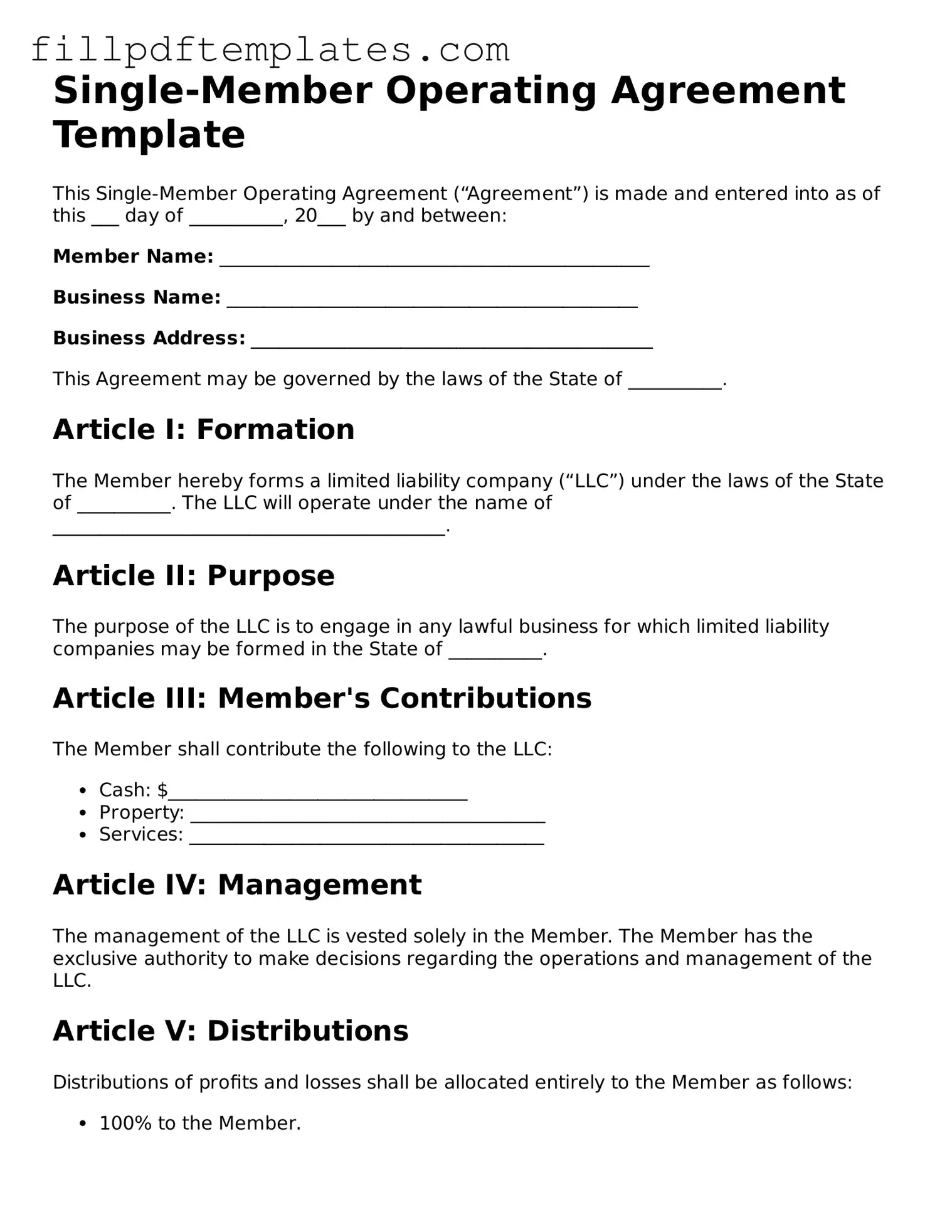Single-Member Operating Agreement Template
This Single-Member Operating Agreement (“Agreement”) is made and entered into as of this ___ day of __________, 20___ by and between:
Member Name: ______________________________________________
Business Name: ____________________________________________
Business Address: ___________________________________________
This Agreement may be governed by the laws of the State of __________.
Article I: Formation
The Member hereby forms a limited liability company (“LLC”) under the laws of the State of __________. The LLC will operate under the name of __________________________________________.
Article II: Purpose
The purpose of the LLC is to engage in any lawful business for which limited liability companies may be formed in the State of __________.
Article III: Member's Contributions
The Member shall contribute the following to the LLC:
- Cash: $________________________________
- Property: ______________________________________
- Services: ______________________________________
Article IV: Management
The management of the LLC is vested solely in the Member. The Member has the exclusive authority to make decisions regarding the operations and management of the LLC.
Article V: Distributions
Distributions of profits and losses shall be allocated entirely to the Member as follows:
Article VI: Indemnification
The LLC shall indemnify the Member against any and all expenses and liabilities incurred in connection with the LLC to the fullest extent allowed by the laws of the State of __________.
Article VII: Amendments
This Agreement may be amended only by a written agreement executed by the Member.
Article VIII: Governing Law
This Agreement shall be governed by and construed in accordance with the laws of the State of __________.
In witness whereof, the Member has executed this Agreement as of the date first above written.
Member Signature: ________________________________
Date: ______________________________________
